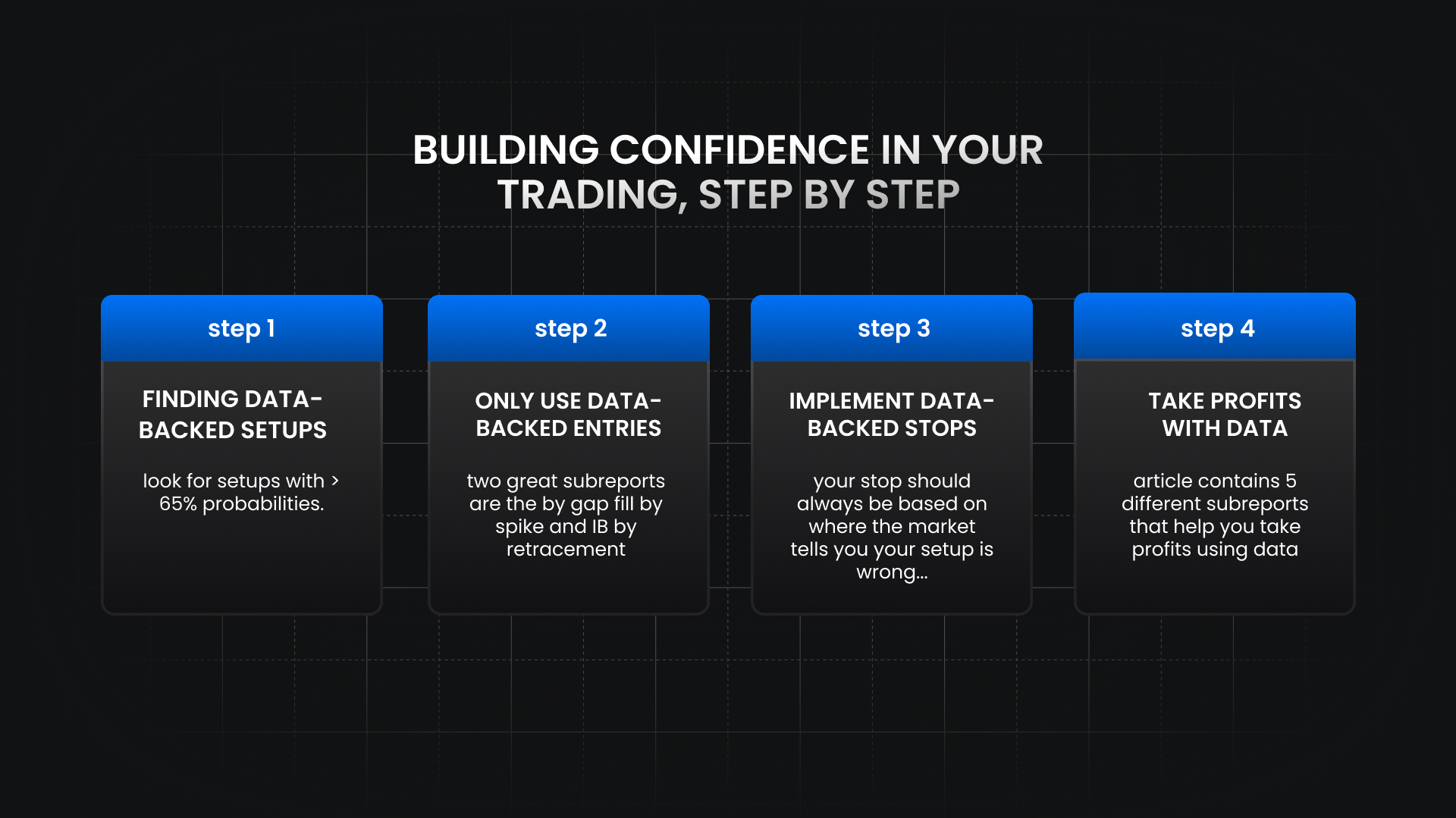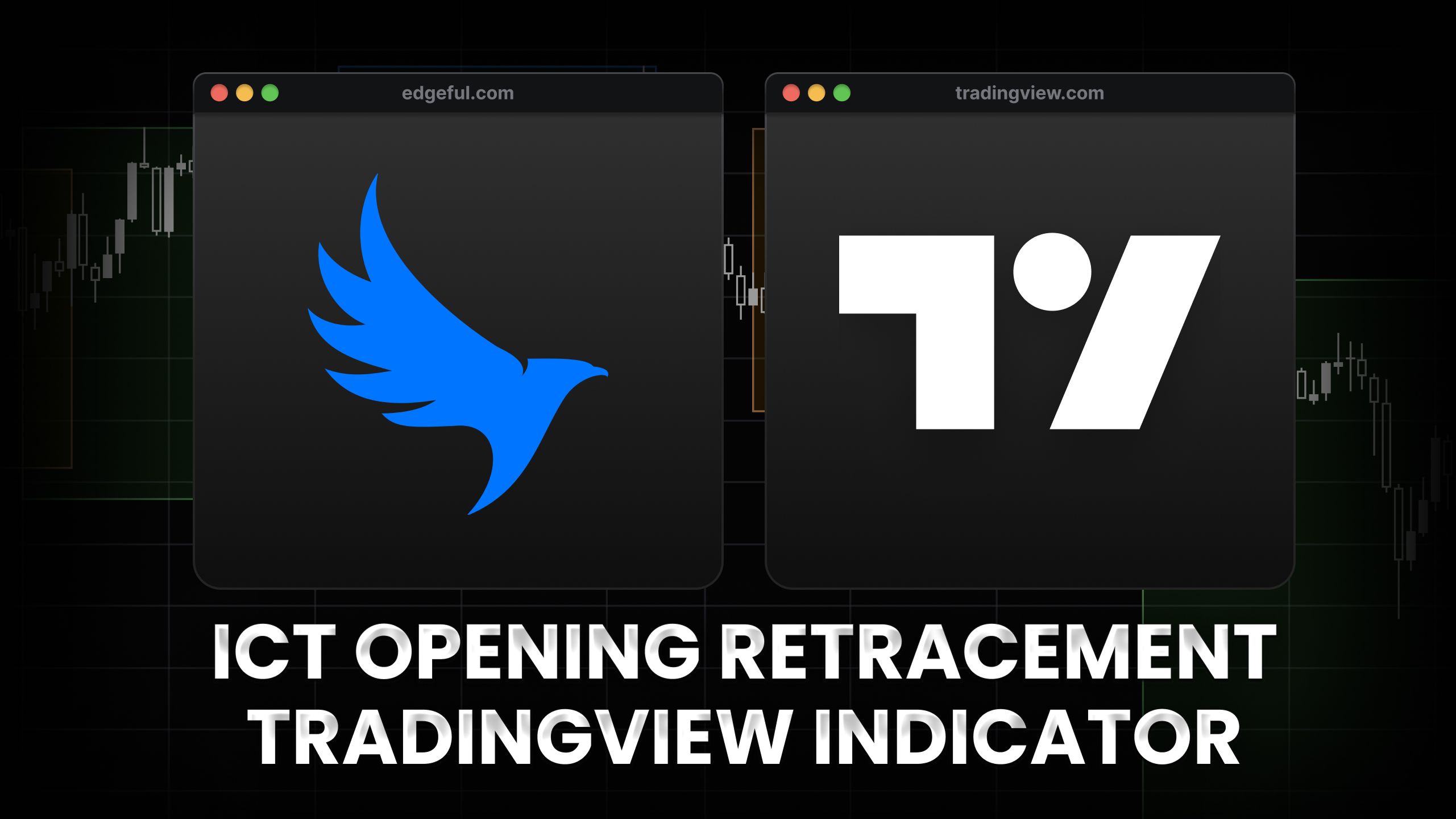futures risk management: 9 rules that prevent blown accounts

trading futures can be incredibly profitable, but without proper futures risk management, even the best strategies will eventually destroy your account. after talking with thousands of traders over the years, I've identified the exact framework that separates consistently profitable traders from those who keep blowing up their accounts.
table of contents
- why most traders get risk management wrong
- the 4 basic risk management rules
- advanced risk management strategies
- edgeful-specific risk management rules
- real examples of risk management in action
- how to implement these rules
- key takeaways
why most traders get risk management wrong
let me be blunt about something: finding profitable setups is actually the easy part of futures trading. if you know how to use edgeful, you can literally see dozens of setups with 65%+ win rates across different markets every single day.
the hard part? not blowing up your account while trading those setups.
here's what I see over and over again with futures traders:
- they find a great strategy (maybe gap trading or breakout patterns)
- they have a few winning days and get confident
- they start sizing up their positions
- they hit a normal losing streak
- they give back weeks or months of profits in just a few sessions
the math behind losing streaks
before diving into futures risk management strategies, you need to understand the mathematical reality of consecutive losses. even strategies with excellent win rates will experience losing streaks:

- 70% win rate strategy: 55% chance of 4 consecutive losses
- 80% win rate strategy: 14% chance of 4 consecutive losses
- 60% win rate strategy: 92% chance of 4 consecutive losses
if you're risking 25% of your account on each trade because your win rate is high, just 4 losses in a row will put you dangerously close to blowing up your account.
the problem isn't your strategy—it's that you have zero futures risk management framework in place.
most traders think risk management just means "set a stop loss" and call it a day. but that's like saying driving safely just means wearing a seatbelt—it's one piece of the puzzle, but nowhere near the complete picture.
real futures trading risk management is a comprehensive system that protects you from:
- individual trade losses
- daily drawdowns
- extended losing streaks
- changing market conditions
- your own emotions and bad decisions
the 4 basic risk management rules
these fundamentals are what every futures trader needs to master before taking their first trade:
rule 1: set maximum loss limits
this means deciding—before the market opens—the maximum amount you're willing to lose in a single day, week, or month.
recommended limits:
- daily limit: 2-3% of your account
- weekly limit: 5-6% of your account
- monthly limit: 10-12% of your account
the key is that these are hard limits. when you hit them, you're done trading—no exceptions, no "just one more trade to get back to even."
while it sucks to come back from a 10-12% drawdown, it's much better than digging out of a 50% or 70% hole.
rule 2: set data-based stop losses
every single trade you take should have a clearly defined stop loss before you enter. that stop should be based on data—not on how much you're willing to lose.
for example, if you're trading gap fills in futures, use historical spike data to set logical stops based on average continuation levels. if YM typically continues $76 after gapping up, you can use this data to set logical stop losses rather than relying on random dollar or percentage limits.

this approach to futures risk management ensures your stops are based on market behavior, not arbitrary numbers.
rule 3: actually take profits
this is where emotions destroy most futures traders. they see a small profit and either get greedy (hoping for more) or fearful (worried it'll disappear).
use data-backed profit targets:
- yesterday's high/low levels based on historical breakout patterns
- gap fill levels when price opens away from previous closes
- initial balance extensions from the first hour of trading
these aren't random levels—they're based on historical probabilities of where price actually goes in futures markets.
rule 4: move stops to breakeven
once a trade moves in your favor, move your stop to your entry price (breakeven). this eliminates the risk of turning a winner into a loser.
I typically do this after a trade moves 50% toward my first target. it's not always perfect, but it prevents the psychological damage of watching profits disappear.
advanced risk management strategies
once you've mastered the basics, these advanced futures risk management rules help you adapt to changing market conditions:
rule 5: size down during losing streaks
remember the math of consecutive losses I showed you earlier? even a 70% win rate strategy has a 55% chance of experiencing 4 consecutive losses.
here's my framework for managing position sizes:
- after 2 consecutive losses: reduce position size by 25%
- after 3 consecutive losses: reduce position size by 50%
- after 4 consecutive losses: take a break for the rest of the week
this prevents you from digging a deeper hole during normal periods of variance.
rule 6: use data to detect market changes
regularly check your strategy's performance across multiple timeframes:
- if recent stats drop by 5% vs longer timeframes: yellow flag (be cautious)
- if recent stats drop by 10%+: red flag (time to adapt)
when I saw gap fill statistics decline from 68% to 50% over a few weeks in december 2024, I immediately sized down and adjusted my approach. this futures risk management decision saved me from much larger losses.
edgeful-specific risk management rules
these rules give you an edge that 99% of futures traders don't have:
rule 7: position sizing based on setup probability
why would you risk the same amount on a 65% setup vs an 85% setup? align your risk with your actual edge:
- 85%+ probability setups: overweight position size
- 75-84% probability setups: 100% of normal size
- 65-74% probability setups: 100% of normal size
- 60-65% probability setups: 75% of normal size
- less than 60% probability setups: don't trade it
this approach to futures risk management ensures you're sizing positions based on mathematical edge, not emotions.
rule 8: limit yourself to one trade per day
I know this sounds limiting, but here's why it works for futures trading:
- forces you to be selective and wait for A+ setups
- eliminates revenge trading and emotional decisions
- prevents overtrading and giving back profits
- allows you to focus completely on execution
once you're consistently profitable with 1 trade per day, then you can consider adding more.
rule 9: avoid low probability trading days
use historical data to identify days when your favorite setups have poor statistics. for example:
- initial balance single breaks on YM: 87.5% on Thursdays vs 58% on Wednesdays
- gap up fills on YM: 92% on Tuesdays vs 55% on Fridays
if your setup has below 60% probability on certain days, just don't trade those days. there's no shame in sitting out when the odds are against you.
real examples of risk management in action
let me show you how these futures risk management rules would have played out in real situations:
example 1: the gap fill decline (December 2024)
when I noticed gap fill stats dropping from 68% to 50% over a few weeks:
- rule 6 triggered (data showed change): I immediately sized down
- rule 5 activated (losing streak): further position size reduction
- rule 9 applied: I started focusing only on the highest probability gap sizes
this framework prevented what could have been massive losses.
example 2: normal consecutive losses
imagine you're trading initial balance breakouts with a 75% win rate, and you hit 3 consecutive losses:
- rules 1-4 limit individual trade damage
- rule 5 reduces position size after loss 2 and 3
- you check rule 6: statistics still show 75% over last 3 months
- conclusion: normal variance, stick with strategy but at reduced size
without this futures risk management framework, most traders would either quit a profitable strategy or double down and blow up.
how to implement these rules starting tomorrow
here's your action plan for implementing proper futures risk management:
- tonight: calculate your max loss limits (daily, weekly, monthly)
- tomorrow morning: write down these 9 rules and keep them visible while trading
- before each trade: check the probability of your setup and size accordingly
- end of each week: review which rules you followed and which you broke
- monthly: analyze if any of your strategies need adjustment based on rule 6
the difference between profitable futures traders and everyone else isn't that they avoid losses—it's that they have systems in place to manage those losses effectively.
frequently asked questions about futures risk management
what's the most important risk management rule for beginners?
rule 1—setting maximum loss limits—is absolutely critical. before you even think about entries or setups, you need to know exactly how much you're willing to lose and stick to those limits religiously.
how do I know if my stop loss is too tight?
use historical data rather than arbitrary percentages. if you're trading gaps, look at average spike data. if you're trading breakouts, examine typical retracement levels. your stops should be based on market behavior, not your comfort level.
should I use the same position size for all trades?
absolutely not. this is one of the biggest mistakes in futures risk management. your position size should vary based on the probability of your setup. higher probability setups warrant larger positions, while marginal setups should be traded smaller.
when should I take a break from trading?
after 4 consecutive losses or when you hit your weekly loss limit. taking breaks prevents emotional decision-making and revenge trading, which are account killers.
key takeaways
effective futures risk management isn't about avoiding losses—it's about managing them systematically. here are the most important points:
- the 4 basic rules: max loss limits, data-based stops, taking profits, moving to breakeven
- the 2 advanced rules: sizing down during streaks, adapting to data changes
- the 3 edgeful-specific rules: probability-based sizing, one trade per day, avoiding low-probability days
futures risk management isn't flashy, but it's what separates traders who are still here in 5 years from those who blow up in 5 months.
the setups and strategies you learn will make you money—but only if you have the risk management framework to survive the inevitable drawdowns and market changes.
if you want to learn more about data-driven trading strategies that complement proper futures risk management, including gap fills, breakout patterns, and statistical analysis, sign up for our free weekly newsletter where we break down exactly how to trade with probabilities, not emotions.
want to dive deeper into futures trading strategies? check out our previous posts on trading engulfing patterns with data and why the "sell in may" myth costs traders money.


